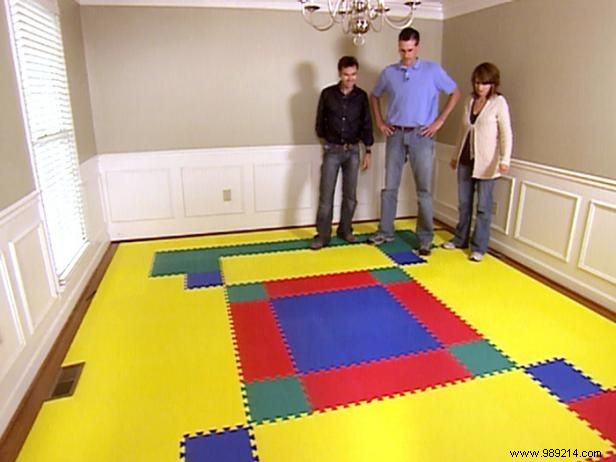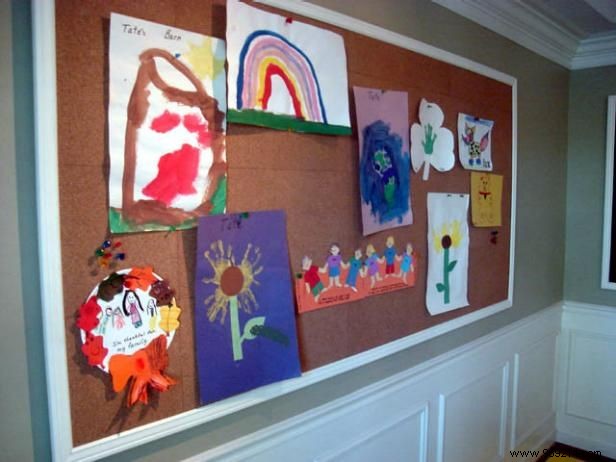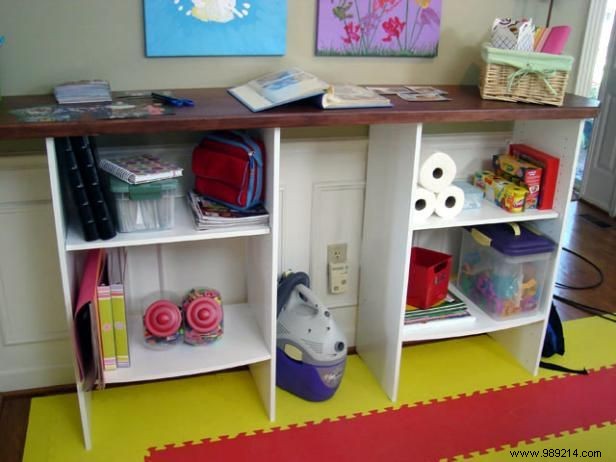
For the children's craft area, consider using interlocking floor tiles to protect the floor below and to provide a colorful and fun decorating theme (figure A). Interlocking tiles come in various colors and are very easy to install by simply snapping them into place and interlocking the adjoining edges. There are no base coats or adhesives required with this product. Arrange the tiles as desired, following a pattern of your own design. To fit tiles around vents or other permanent fixtures in the floor, use a utility knife to cut through the tiles. Keep several extra tiles in storage so that if it gets damaged, it can be picked up and replaced.

To help protect the walls in the children's room, a variety of fun and durable display surfaces can be used. DIY chalkboards, magnetic boards, and cork boards not only provide a great space to display kids' crafts and activities, they also help prevent permanent damage to wall surfaces. The panels can be easily removed later to return the space to its previous use. Create simple chalkboard panels by painting sheet metal parts with chalkboard paint, available at home centers or craft stores. To create a magnetic board, cut sheet metal to size and attach to plywood with contact adhesive. Use scissors to cut sheet metal. Whenever cutting sheet metal, be sure to wear work gloves, as metal edges are very sharp. Create a corkboard panel by bonding cork tiles to plywood with construction adhesive. For display panels made this way, cover any rough or sharp edges with wood trim. Framing the panels in molding also provides a means of anchoring them to the walls. Attach the panels to the wall with wood screws, making sure to secure them to the wall studs, not just the drywall.

A work and storage station can be created by mounting a pre-cut stained piece of 3/4-inch plywood, with wood veneer, on pre-made shelving units that work ideally for the base. Units can be adjusted with adjustable shelves for versatile storage. Assemble the shelving cabinets according to the manufacturer's instructions, secure to the wall using the brackets provided, then mount the plywood top to the completed cabinets using the plastic brackets and screws. For a workstation that will be used in a children's room, be sure to mount the unit to the wall to avoid the possibility of it tipping forward. For added safety, cut off the corners of your work surface that face the room and sand the edges before painting.